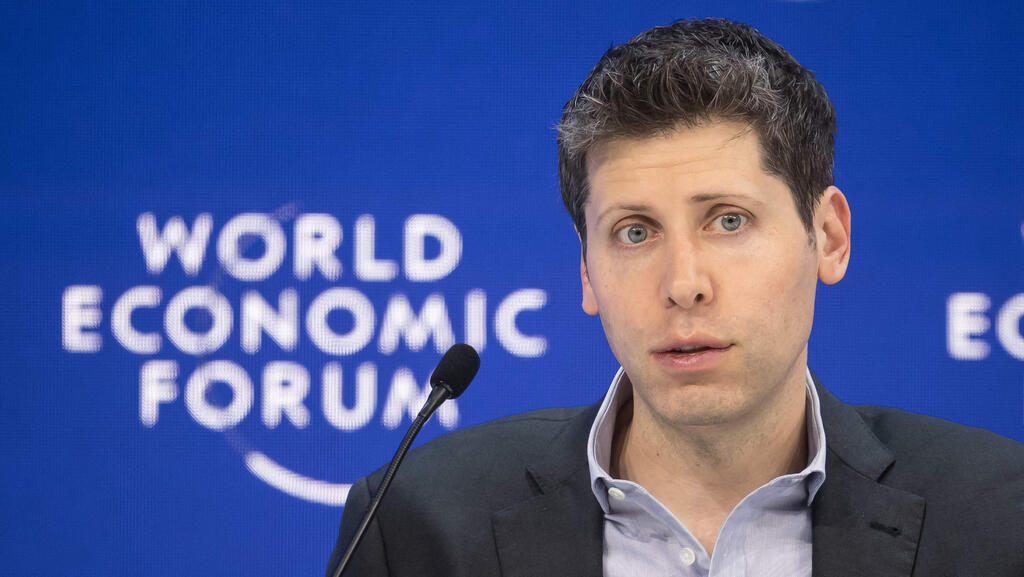
Sam Altman's $7 trillion chip dream: Bold vision or delusional fantasy?
The OpenAI CEO is making headlines again, reportedly trying to raise $7 trillion to reshape the global chip industry. However, the amount is completely unrealistic, computing power is already ravaging natural resources and the industry itself is skeptical of his true goal
How much should be invested to "secure our collective future"? $7 trillion in chip factories, if you ask Sam Altman. According to a report by the Wall Street Journal, the CEO of OpenAI is in talks with investors to raise between $5-7 trillion to reshape the global chip industry and thereby ensure the supply of the computing power required for artificial intelligence developments. "We believe the world needs more ai infrastructure--fab capacity, energy, datacenters, etc--than people are currently planning to build," Altman wrote on X earlier this month. "Building massive-scale ai infrastructure, and a resilient supply chain, is crucial to economic competitiveness."
While his words may sound reasonable, the reported pricing of the project is unusual by any standard.
1. Hoarding Chips
Altman has been trying to enter the field of chips for several years now. In 2018, he invested in an artificial intelligence chip startup called Rain Neuromorphics. A year later OpenAI signed a letter of intent to invest $51 million in Rain's chips. Just before Altman was ousted for a week in November, it was reported that he was looking to raise several billions for a chip project that could eventually compete with Nvidia, the company that today controls about 80% of the chip market and whose processing units (GPU) are behind OpenAI and Google's artificial intelligence models. Its products are as popular as they are in short supply, and CEO and founder of Meta Mark Zuckerberg stated in a recent investor call that one of the company's strategies is to stockpile these chips in quantities.
2. Where does the capital come from?
Even if Altman is looking to raise capital (and perhaps debt) using the salami method - for example twenty installments of $350 billion over ten years - $7 trillion is a lot of money. For the sake of comparison, this is an amount higher than the GDP of Germany or Great Britain, 45 times the cost of building the International Space Station and double the revenues of the global automotive industry in 2023 and 13 times the revenues of the global chip industry in 2023. Even in terms of venture capital, this is a huge amount of capital. When the Japanese investment giant SoftBank announced the $100 billion Vision Fund, you could hear the entire tech sector gasp. Since then, the feat has not been replicated, and the fund itself has not been a huge success either.
And here Altman comes and wants to raise an extraordinary amount to establish numerous factories, while promising that OpenAI will also be a major customer. In the spirit of big numbers, it's no wonder that Altman also turned to SoftBank for money. Masayoshi Son's company has a unique interest in such a project, he himself announced that the focus of the company and its investments will be in artificial intelligence. The most successful holding in his portfolio today is the chip company Arm, and Son himself is known for his attraction to talented and charismatic entrepreneurs. According to reports, Altman has already met with Sheikh Tahnoon bin Zayed al-Nahyan, chairman of the sovereign wealth fund of Abu Dhabi in the United Arab Emirates (UAE), which is worth $790 billion. A company called G42 , headed by Sheikh Tahnoon, announced a partnership with OpenAI in October.
3. Investment-intensive industry
Computing power is what is often seen by developers and scientists in the field of artificial intelligence as a limitation. The equation perceived by them is simple: the more computing power there is, the more sophisticated the model can be. The more sophisticated the model, the more tasks it can perform with higher accuracy. This way the chatbots will be able to formulate more complex answers, which are based on more historical and current information, in more languages and in a variety of tasks. Altman's ultimate goal is to achieve artificial general intelligence (AGI), or a machine that surpasses human intelligence.
Computing power is chips, but not only. This is a particularly complex industry. The chips are inside huge data centers, which require huge amounts of electricity, large amounts of water to cool them, and expensive minerals. So, for example, a study from last year found that training OpenAI's GPT3 model consumed 70,000 liters of water; And artificial intelligence increased Microsoft's water consumption by 34% in the past year. The industry also requires a skilled workforce, which is also not in abundance. The artificial intelligence industry currently keeps most of the costs in secret, which may be because it’s an industrial secret, or because it is an ecological disaster.
Altman's effort to increase global computing power (and thus also secure our future) does not take place in a vacuum, but at a point in time where the field of chips is in dire need of workers and material resources, and above all, a period of rivalry between superpowers. The United States and China are resolutely protecting the field of chips, preventing the export of raw materials and the sale of shares to foreign parties. Aware of these tensions, Altman has already spoken with the US Department of Commerce about his plans. This rivalry also results in a lot of capital flowing into the industry, some of it also governmental. The Chinese government, for example, has already invested over $150 billion in the field, and most chip companies in the world are opening additional factories to support production. Money is not the market's problem right now, but all the material and human resources that are in short supply.
4. Priorities
Altman's goal may be dismissed by many with a shrug. Common sense assumes that he will never receive such an amount, if only because there simply isn't that much liquid money in the world. Still, when one of the most prominent CEOs in the world makes such a request, it is impossible to ignore.
4% of the amount that Altman is asking for is enough to address the problem of world hunger until the year 2030, according to the United Nations' estimates. But Altman is not looking to address problems such as starving children, but rather the unseen future with artificial general intelligence. These systems are at the heart of science fiction, mainly dystopian visions, but sometimes also utopian. A reality in which machines will solve all the world's problems and help us settle distant worlds. Science today is no closer to understanding how to develop such systems than when the idea was talked about almost 70 years ago. If he succeeds in raising the capital, not only will millions of children in the world continue to starve, but they will also suffer from another acute lack of resources - water, electricity, capital and rare minerals that will be diverted to chip factories.
5. There is no way out
The inescapable conclusion is that Altman's ambitions are quite disconnected from reality. Not only from the world money market, geopolitics, material resources, but also from science. "If you just assume that computers never get any faster, you might come to the conclusion [that] we need 14 different planets and three different galaxies and four more Suns to fuel all this," said Nvidia CEO Jensen Huang when asked on the matter. Huang, in this sense, is as realist as we could only hope Altman was. A powerful and influential billionaire whose phenomenal success has not curbed his innovation, but has also not seen him lose touch with reality.














